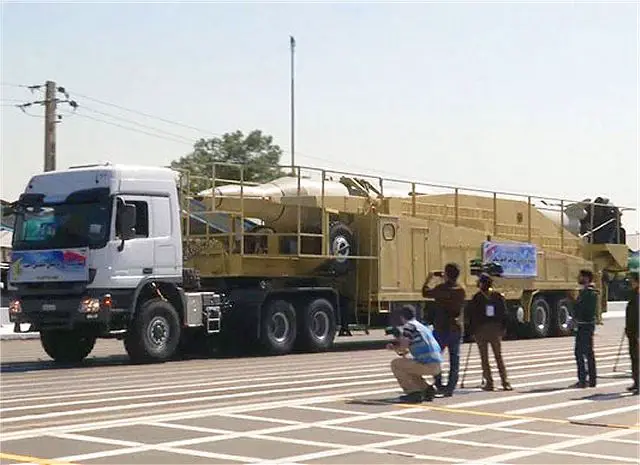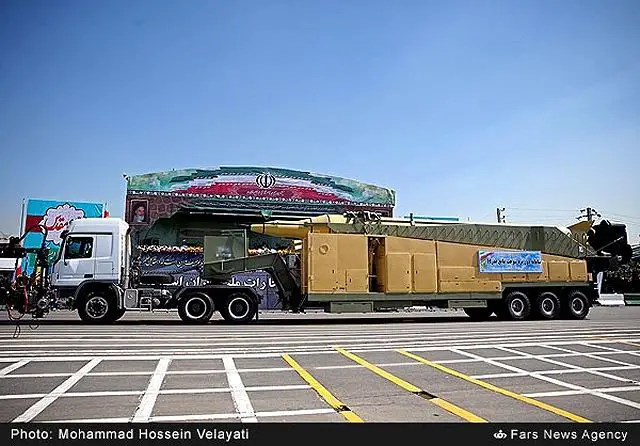Breaking news
Iran Armed Forces display 12 long-range ballistic missiles during military parade in Tehran 12309152.
|
|
|||
|
Defence & Security News - Iran
|
|||
|
|
|||
| Iran Armed Forces display 12 long-range ballistic missiles during military parade in Tehran. | |||
|
The Iranian Armed Forces publicly displayed 12 long-range ballistic missiles for the first time after Tehran and the world powers reached a nuclear agreement and the UN Security Council issued a non-binding resolution which calls for restrictions on Iran's missile program. The nationwide parades by various units of the Islamic Republic Army, Islamic Revolution Guards Corps (IRGC), Law Enforcement Police and Basij (volunteer) forces were staged in Tehran and other cities across the country on September 22, 2015, morning.
|
|||
|
|
|||
 Iranian Qadr F ballistic missile during military parade in Tehran, September 22, 2015. Iranian Qadr F ballistic missile during military parade in Tehran, September 22, 2015. |
|||
|
|
|||
|
During the parades, the Iranian Armed Forces displayed 12 long-range ballistic missiles, including 4 Qadr F missiles with a range of 1,950km, Qadr H missiles with a range of 1,650km and 4 Sejjil missiles with a range of 2,000km. Also, 4 Khalij-e Fars anti-ship ballistic missiles and 4 Hormoz anti-ship and radar-evading missiles with a range of 300km were among other missiles displayed in today's parades. The public display of Iran's long-range ballistic missiles is seen as a defiance of the western states' demand and resolution 2231 which calls for restrictions on Iran's missile program.
|
|||
|
|
|||
 |
|||
|
|
|||
|
The Iranian Armed Forces have test-fired different types of newly-developed missiles and torpedoes and tested a large number of home-made weapons, tools and equipment, including submarines, military ships, artillery, choppers, aircrafts, UAVs and air defense and electronic systems, during massive military drills in the last few years.
Defense analysts and military observers say that Iran's war-games and its advancements in weapons production have proved as a deterrent factor. Iran successfully tested second generation of Sejjil missiles and brought it into mass production in 2013. Sejjil missiles are considered as the third generation of Iran-made long-range missiles. Also, Iran's 2000km-range, liquid-fuel, Qadr F ballistic missile can reach territories as far as Israel. Iran's surface-to-surface Sejjil missile, the long-range Shahab-3 ballistic missile which has a range of up to 2,000 km, and Zelzal and Fateh missiles have all been developed by the Aerospace Organization of the Defense Industries. This is while the solid-fuel, two-stage Sejjil missile with two engines, is capable of reaching a very high altitude and therefore has a longer range than that of the Shahab 3 model. |
|||




























